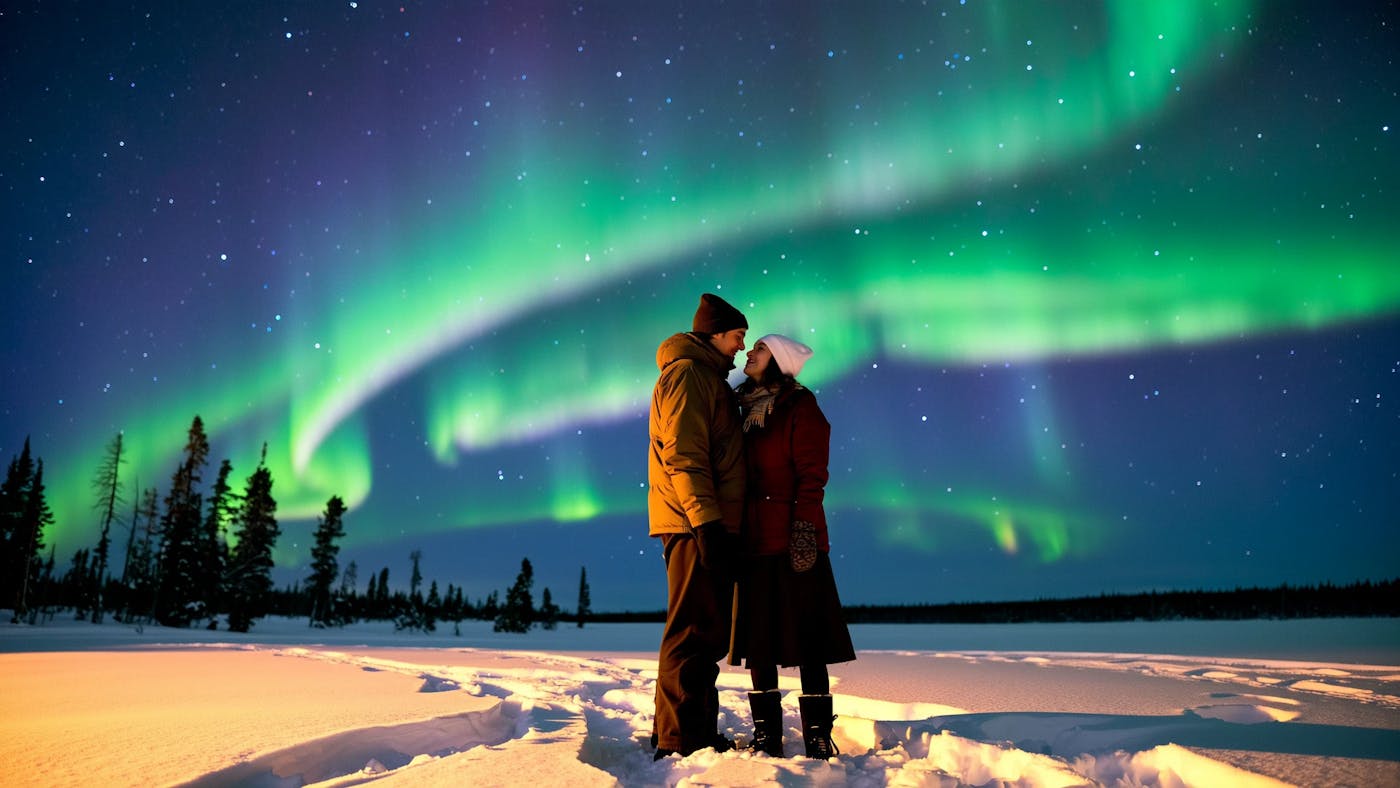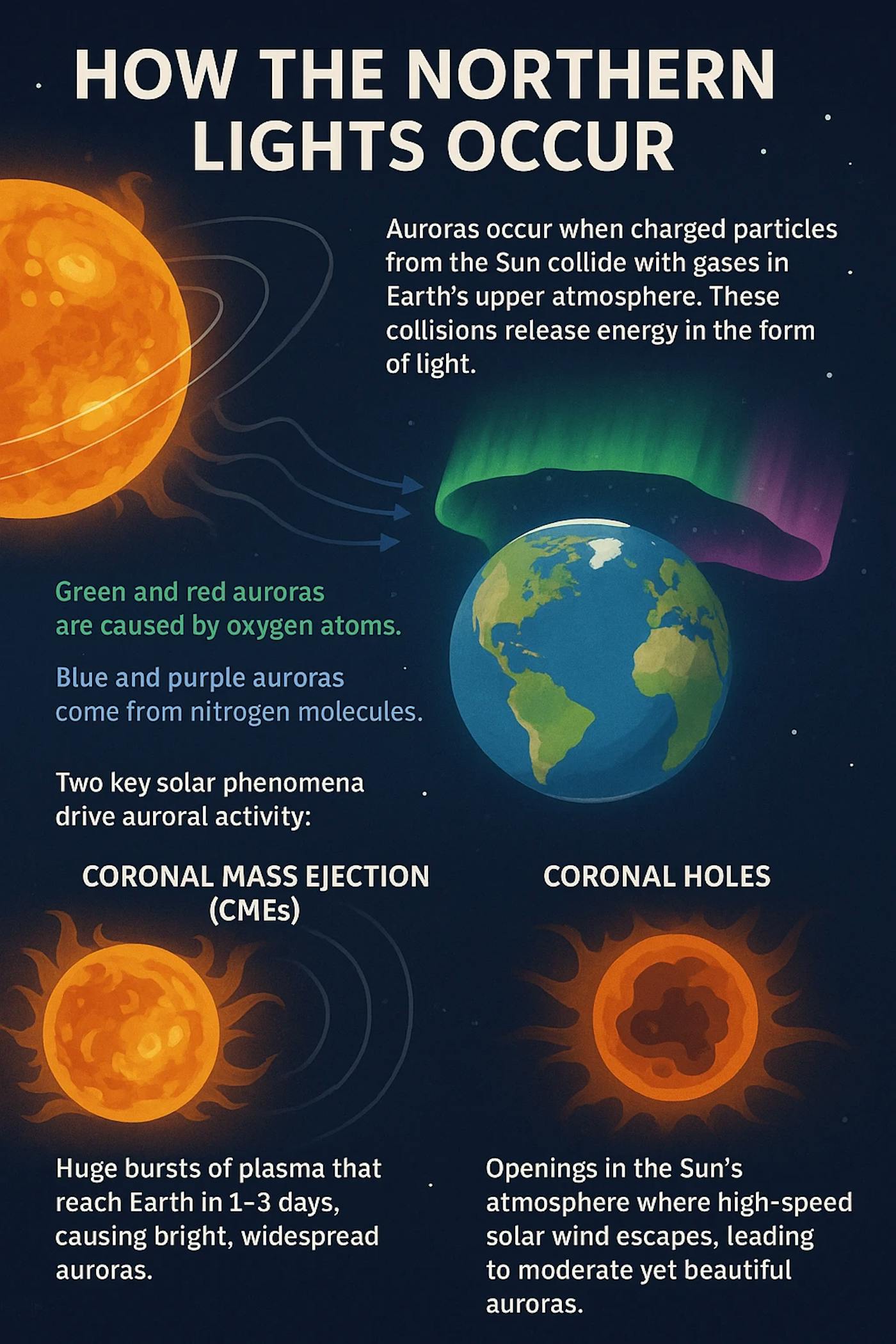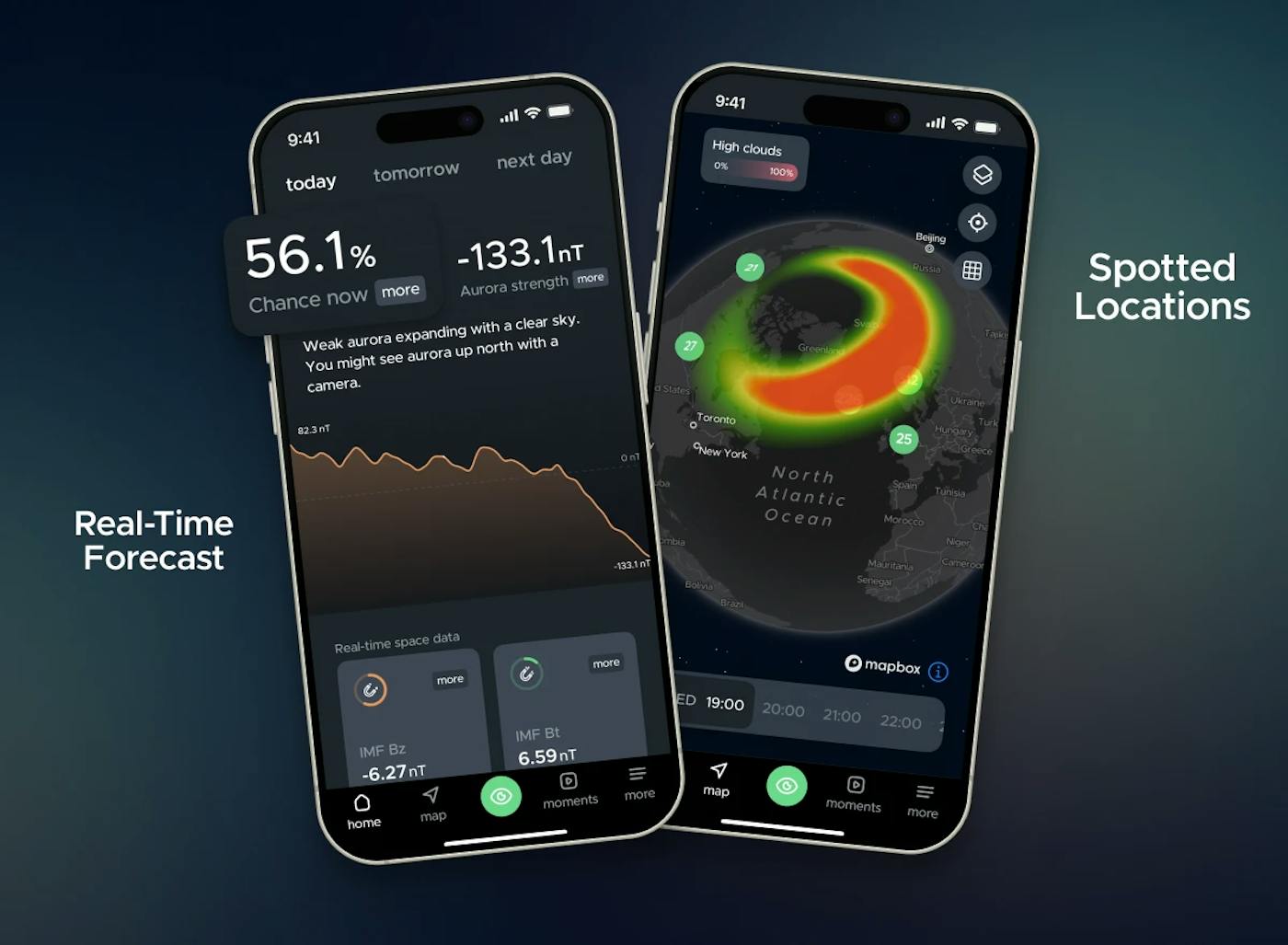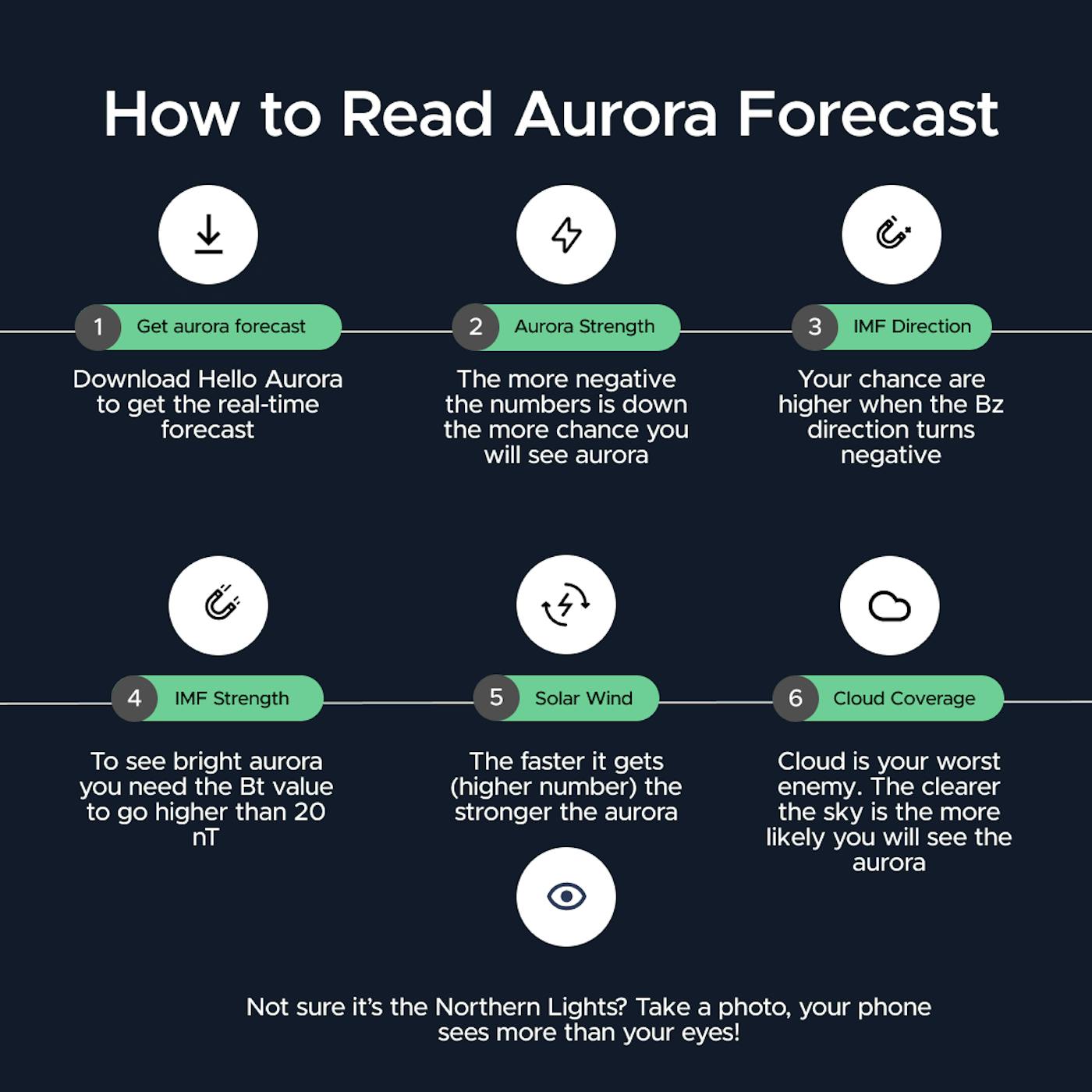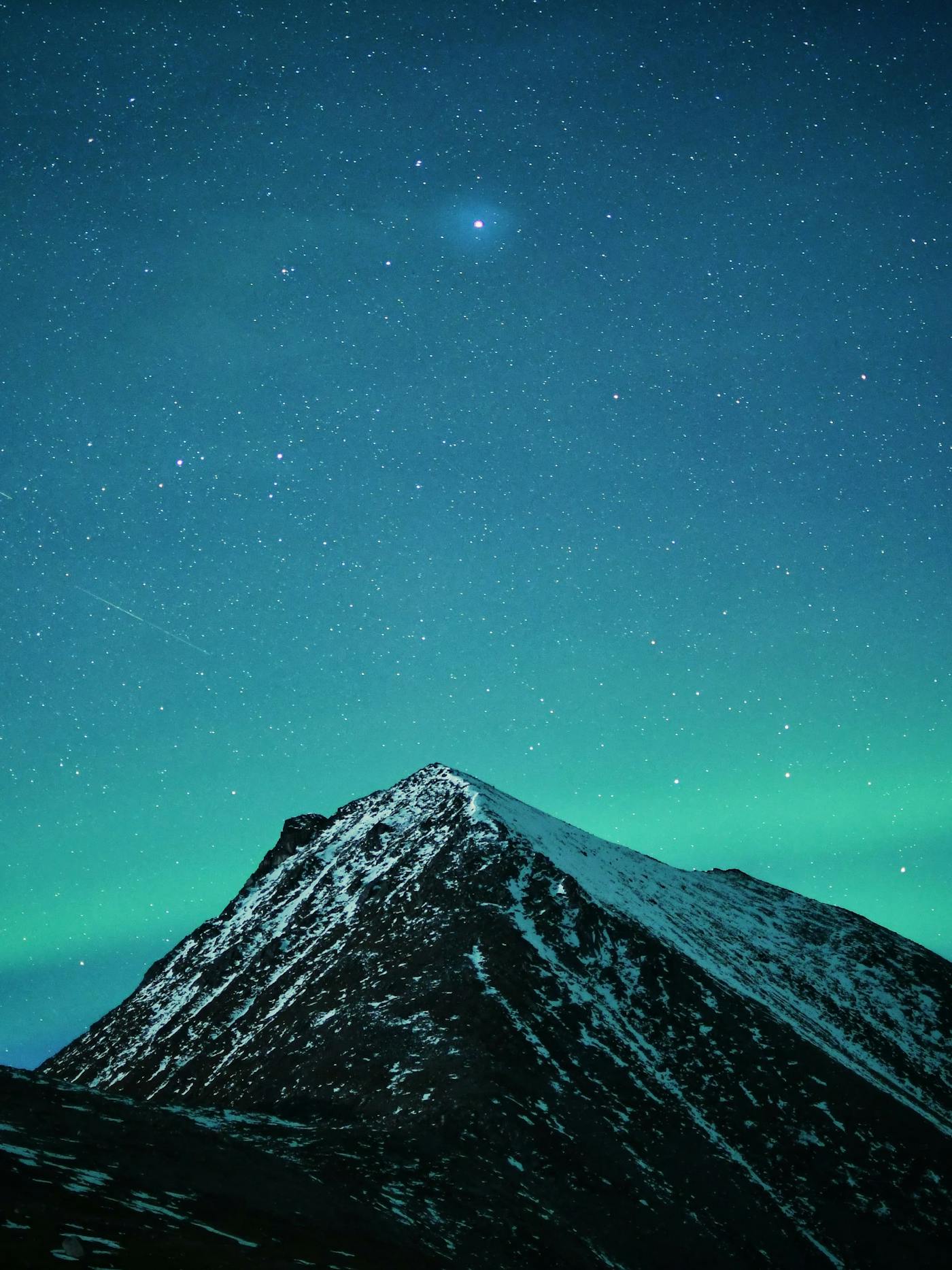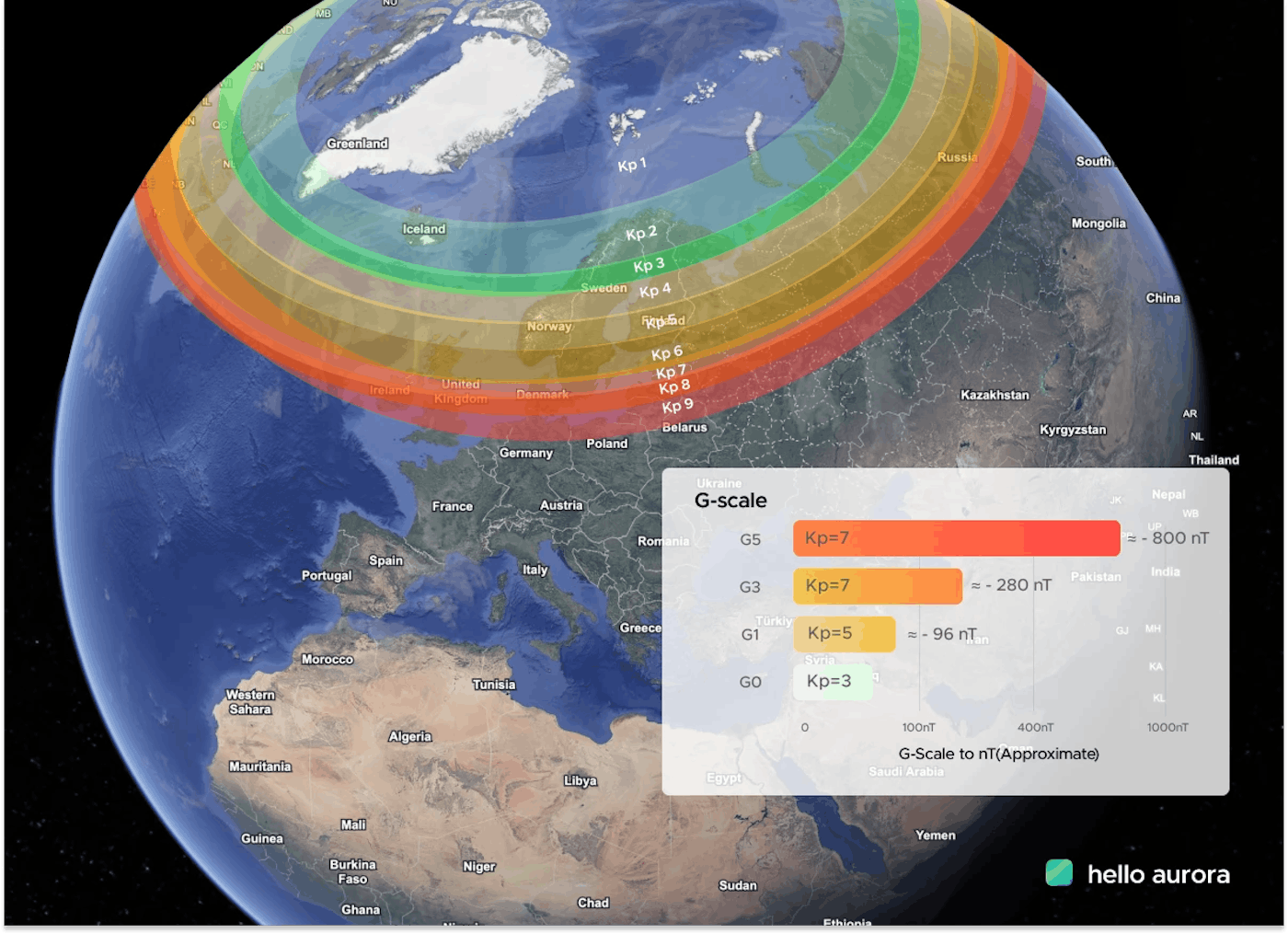For people in northern regions, you are already under or very close to the auroral oval. The aurora can be active at any Kp level, even Kp 0 or 1, because the lights are happening directly above you. As an article from European Space Agency explains, the aurora oval is present at around 65-70 degrees north or south, encircling the polar caps.
Therefore, for people in the North, it's more important to look for other signs of aurora activity, such as clear, dark skies, rather than fixating on the Kp number.
👉 TLDR: The Kp index is an excellent tool for those at mid-latitudes to know if they have a chance of seeing the aurora. However, for those already in the high-latitude aurora zone, relying on the Kp index to decide when to look up is a mistake. The aurora is often active in these regions even during "quiet" conditions. Your best bet is to find a clear night, get away from city lights, and look up!
What to do instead:
- If you’re already in an aurora country
Focus on real-time aurora activity and local cloud conditions. These two factors matter most because they tell you what’s happening right now above you—not 3 hours ahead. This gives you the best chance of knowing when to step outside. - If you’re in a place where the Northern Lights are rare
Knowing the Kp index help you understand you chance in the lower latitude, but don’t rely on them alone.
Use the Hello Aurora app and turn on: - Substorm notifications — tells you when activity suddenly gets stronger
- Aurora spotted alerts — real photos and alert from people nearby
This simple combo gives you real, live information so you know when there’s actually something happening in your area.
2. Do not trust the long-term forecasts
Long-term forecasts can feel exciting when they look good and disappointing when they don't but they’re really only rough guesses. They’re based on what happened during the last 27-day solar rotation and the Kp index.
The problem?
- The aurora activity can change a lot as the day gets closer.
- The Kp index (often used in long-term forecasts) isn’t reliable on its own.
- Long-term forecasts don’t tell you anything about clouds or local weather—both of which decide whether you can actually see the lights.
What to do instead:
Follow the diagram above and check the forecast on the actual night you plan to go out, and look at your local weather. This gives you the best chance of seeing the Northern Lights.
3. Do not wait for a “perfect” time to see the Northern Lights
We get asked all the time: “What time will the Northern Lights be visible?”
We totally wish we could give you the exact hour! but the aurora doesn’t run on a schedule. It depends on space weather and your local weather, and both can change quickly.
The Northern Lights can appear anytime from early evening to early morning, sometimes as early as 6 PM in winter, and sometimes closer to 5 AM. It all depends on:
- Your location
- Light pollution
- Space weather
- Local weather
What to do instead:
Don’t wait for a specific hour. Step outside, keep an eye on the sky, and on Hello Aurora app. We’ve also gathered common “peak times” seen by hunters to help give you a general idea that you can use it with a pinch of salt. Remember, the lights can surprise you anytime.
4. Do not expect the Aurora to be bright
On social media, you usually see the aurora at its brightest with colors such as vivid green, red, or purple. But in real life, it’s often much softer and can even look like a pale mist or faint cloud.
Many people miss the aurora because they expect it to look bold and intense, when it may actually start as something subtle.
What to do instead:
Use your phone or camera to take a quick photo of the sky. Cameras pick up color better than the human eye and can reveal the aurora even when it looks faint. This simple habit helps you avoid missing the show.
